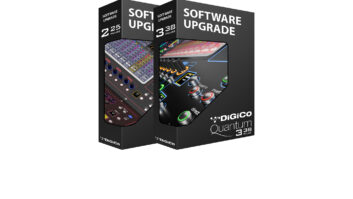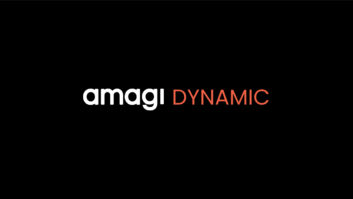Austin, Texas – The first AM/FM radios that use software to tune into stations will dramatically enhance reception of analog broadcasts and will be in stores in time for fourth-quarter 2003 sales, according to Motorola. Some of the products will be displayed at January’s CES.
OEM car radios incorporating the chipset, called Symphony, will be available to consumers in the 2004 calendar year, said John Hansen, a marketing director in Motorola’s semiconductor products sector.
The audible difference between a Symphony-based radio and a traditional analog radio, the company claimed, will be comparable to the difference between cassette and CD playback.
The chipset, Hansen said, will let consumers ‘hear more stations in more places’ The reasons include:
- the ability to stay tuned to a particular station longer and with a greater signal-to-noise ratio and less interference under weak signal conditions, including at the fringe’s of a station’s broadcast area,
- greater rejection of adjacent-channel interference,
- noise rejection that doesn’t filter out low and high frequencies,
- reduced multipath interference,
- increased resistance to hisses, crackles, and pops caused not just by multipath but also by car’s ignition and electrical systems and a CD’s servo mechanism,
Like the aborted FMX encode-decode technology proposed in the 1980s for FM stations and receivers, the receiver-based Symphony solution will also extend the radius at which radio stations can be heard in stereo before degraded reception causes the radio to blend the signal to mono. Symphony, however, will also deliver this advantage to AM and FM stereo listeners without an investment by broadcasters.
The chipset also delivers greater stereo separation, often 40dB greater than current premium radios, and it can be used in diversity-tuning radios to enhance multipath rejection even more.
Motorola’s 150-Mips solution, which consists of a general purpose DSP chip and nine special purpose DSP chips, is a step beyond electronic tuning, which is common in radios today and still uses mechanical means to tune to a station, said Hansen.
Motorola’s solution, Hansen claimed, might cause some suppliers to rethink their IBOC-radio plans. A Symphony-based radio, he explained, would cost about the same as a traditional analog radio yet ‘raise the bar when comparing traditional AM/FM radio with digital IBOC (in-band on-channel) broadcasting.’ In fact, he said, a Symphony radio will sound better than today’s premium radios.
In describing Symphony’s ability to reject adjacent channels, Hansen said consumers will be able to listen to a station ‘with much less distortion’ when an adjacent channel of the same strength is being received. When the adjacent channel is four times stronger, the tuned station will still be ‘more listenable.’
The first public demonstrations of the technology will be held October 5 at the Audio Engineering Society (AES) convention in Los Angeles and again at January’s CES at a suite and in the Digital Car Pavilion.
The first commercial products incorporating the chipset will be shelf systems, car radios, and possibly portables, Hansen said. Multiple CE companies have committed to using the chipset. Hansen would disclose only the name of one partner, Hyundai Autonet, which makes car radios for automakers and aftermarket suppliers. Nonetheless, he claimed ‘a lot more companies than Hyundai have committed’ to produce radios for home and car audio applications.
Motorola hasn’t decided whether to license the technology to other chipmakers.
Hansen noted that Motorola launched the first commercial mass-produced car radios in the United States and is now launching the first chipsets that make software tuning possible.













